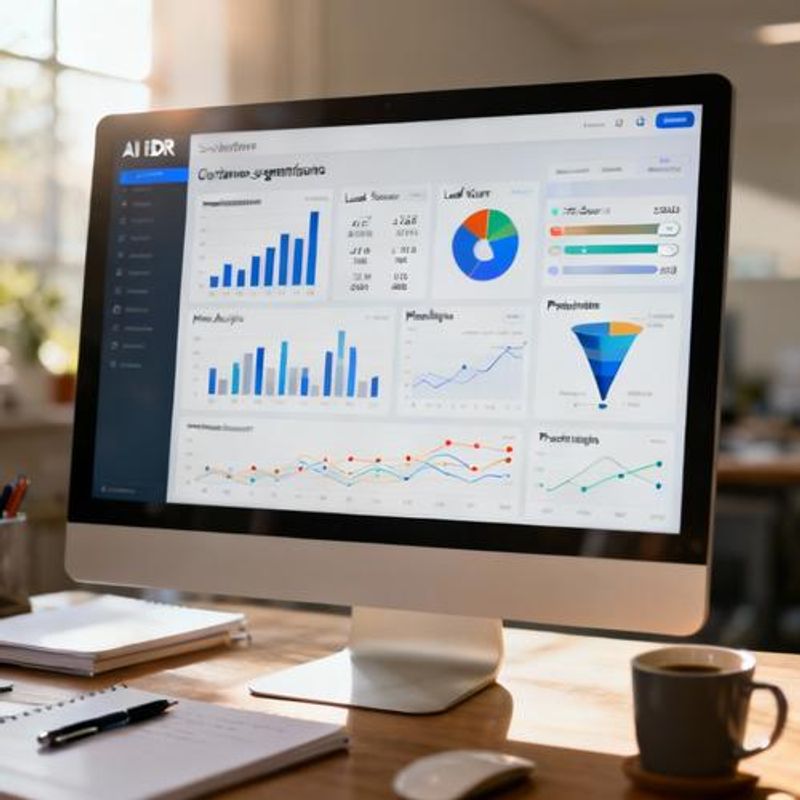AI BDR Software for Data Analysts: A Complete Guide to Leveraging Sales Intelligence for Business Growth

Data analysts are increasingly tasked with optimizing sales processes and predicting customer behavior, yet traditional sales data often lacks the depth needed for meaningful insights. AI BDR (Business Development Representative) software bridges this gap by automating lead qualification, enriching customer profiles, and generating actionable sales intelligence. This guide reveals how data analysts can leverage AI BDR tools to transform raw sales data into strategic business advantages, complete with implementation frameworks and real-world applications.

Why AI BDR Software Matters for Data-Driven Organizations
Sales teams generate massive amounts of unstructured data through emails, calls, and prospect interactions. Data analysts working with traditional CRM systems face several critical challenges: incomplete customer profiles, inconsistent data entry, delayed lead scoring updates, and limited predictive capabilities. AI BDR software addresses these pain points by automating data collection, standardizing customer information, and providing real-time insights that enable analysts to build more accurate forecasting models and identify high-value opportunities before competitors.
Key Benefits: What AI BDR Software Delivers
Research shows that organizations using AI-powered sales tools see significant improvements in data quality and decision-making speed. Here are the core advantages for data analysts:
- Automated data enrichment that fills gaps in customer profiles with 90%+ accuracy
- Real-time lead scoring based on behavioral and firmographic data
- Predictive analytics for pipeline forecasting and churn prevention
- Structured conversation intelligence that converts calls into analyzable data

Essential Features to Evaluate in AI BDR Software
When evaluating AI BDR software for analytical purposes, focus on data integration capabilities first. The platform should connect seamlessly with your existing tech stack including CRM, marketing automation, and business intelligence tools. Look for robust API documentation and pre-built connectors. Data quality features are equally critical—prioritize solutions offering automatic data validation, duplicate detection, and standardization protocols. Advanced analytics capabilities should include machine learning models for lead scoring, customer lifetime value prediction, and sales forecasting with confidence intervals.
Implementation Framework for Data Analysts
Start with a data audit to identify current gaps and inconsistencies in your sales database. Map out data flow requirements between AI BDR software and existing systems. Establish baseline metrics for lead quality, conversion rates, and sales cycle length. During the pilot phase, focus on one sales segment or geographic region to validate data accuracy and model performance. Create custom dashboards that translate AI insights into executive-friendly visualizations. Document data governance protocols to ensure compliance with privacy regulations while maintaining analytical value.
Step-by-Step Setup Process
- Configure data sources and establish API connections with existing CRM and marketing platforms
- Define lead scoring criteria based on historical conversion data and business objectives
- Train AI models using clean historical data spanning at least 12 months
- Create automated reporting workflows and establish data quality monitoring alerts

Common Implementation Pitfalls and How to Avoid Them
Many organizations rush into AI BDR implementation without proper data preparation, leading to poor model performance and user adoption resistance. Avoid over-relying on AI predictions without human validation—establish feedback loops where sales teams can correct model outputs. Don't neglect data privacy compliance; ensure your AI BDR software meets GDPR, CCPA, and industry-specific regulations. Resist the temptation to track every possible metric; focus on key performance indicators that directly impact revenue. Finally, plan for ongoing model maintenance and retraining as market conditions and customer behaviors evolve.
Measuring Success and ROI
Track data quality improvements through metrics like completeness rates, accuracy scores, and time-to-insight reductions. Monitor sales performance indicators including lead-to-opportunity conversion rates, sales cycle acceleration, and deal size optimization. Calculate the analytical productivity gains by measuring time saved on data preparation and report generation. Document the business impact through improved forecast accuracy, reduced customer acquisition costs, and increased sales team productivity. Establish regular review cycles to assess model performance and identify optimization opportunities.
Next Steps: Maximizing Your AI BDR Investment
AI BDR software represents a significant opportunity for data analysts to elevate their impact on sales performance and business growth. Start by conducting a comprehensive evaluation of your current data infrastructure and identifying specific use cases where AI can deliver immediate value. Consider running a pilot program with a leading AI BDR platform to validate the benefits outlined in this guide. For organizations ready to transform their sales analytics capabilities, the investment in AI BDR software typically pays for itself within the first quarter through improved data quality and accelerated decision-making. Take action today by scheduling demos with top-rated AI BDR vendors and begin your journey toward data-driven sales excellence.